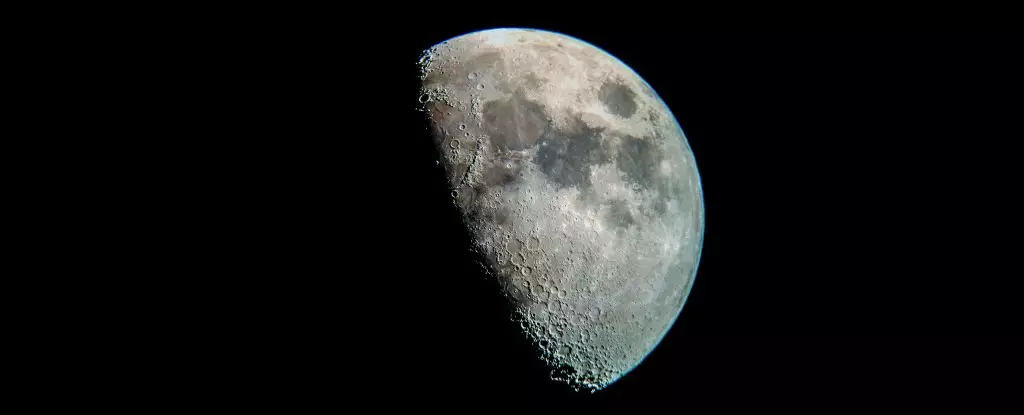The intriguing history of Earth’s celestial companion, the Moon, has long captivated scientists and astronomers alike. Recent research has proposed a compelling shift in our understanding of its formation, suggesting that the Moon might have come into existence significantly earlier than previously estimated. This revelation not only casts new light on the Moon’s early life but also poses intriguing questions about the origins and evolution of Earth itself.
Traditionally, the prevailing narrative placed the Moon’s formation at around 4.35 billion years ago. However, new analyses spearheaded by a team of geologists, including Francis Nimmo from UC Santa Cruz, suggest that the Moon may have actually formed around 4.53 billion years ago. This timing is strikingly close to Earth’s own formation, which occurred approximately 4.54 billion years ago. The implications are profound, hinting that our planet and the Moon have been inextricably linked throughout most of their shared histories.
The onset of the Solar System was characterized by tumultuous and chaotic conditions, with the young Sun surrounded by a swirling disk of gas and dust. Scientists have long theorized that a Mars-sized object collided with this early Earth, ejecting material into space that eventually coalesced to form the Moon. The recent findings, based on advanced modeling and analysis of lunar zircon, challenge some previously accepted concepts, suggesting that the timeline of this monumental collision needs to be recalibrated.
One of the pivotal pieces of evidence in this new timeline comes from dating zircon crystals on the Moon. Zircon, a mineral known for its ability to preserve geological time, has been the focus of attention due to its unique properties. As zircon crystals form, they incorporate uranium while rejecting lead. This particular characteristic allows scientists to gauge their age with remarkable precision, tracking the radioactive decay of uranium into lead over time.
Zircon samples retrieved from the Moon have yielded ages much older than the previously held estimate of 4.35 billion years. Some samples have been dated at approximately 4.46 and 4.51 billion years old, suggesting that Moon’s crustal material predated the globally recognized timeline of early lunar history. This seeming contradiction prompted a closer inspection, leading Nimmo and his colleagues to propose that the Moon indeed formed earlier but subsequently underwent widespread remelting around 4.35 billion years ago.
The dynamics of the Earth-Moon system are also critical to understanding these findings. As the Moon formed and entered orbit around the Earth, its path may not have been a simple circle. Instead, the orbit could have been relatively eccentric, leading to substantial gravitational interactions between the two bodies. This gravitational tug-of-war would have generated tidal forces, causing stretching and warming within the Moon’s surface and possibly melting portions of it.
This tidal remelting could account for both the younger surface rocks found on the Moon and the ancient zircon crystals, neatly bridging the gap in the timeline. The time frame during which such remelting could have occurred corresponds to evidence of older surface materials and accounts for the surprising lack of extensive impact basins on the lunar surface.
The new insights into the Moon’s formation timeline also provide critical information regarding its geological history, particularly regarding early impact events. The Moon’s surface currently displays fewer large impact basins than scientists would expect based on the degree of violent bombardment the early Solar System is believed to have experienced. If the Moon underwent periods of remelting, the evidence of previous impacts could have essentially been “erased” from the surface.
Moreover, this remelting scenario raises questions about the presence of metals on the Moon. Earth’s surface holds metals accumulated from planetesimals during its formative years, but the Moon appears to have significantly less metal. One possible explanation posits that during the remelting phase, metals present in the Moon’s surface may have sunk below, preventing them from being detected today.
The research spearheaded by Nimmo and colleagues adds a substantial new layer to our understanding of the Moon’s history and its relationship with Earth. If validated, this earlier formation date not only brings to light several unresolved mysteries about the Moon, such as its few impact basins and lack of surface metals, but also enhances our perspective on the evolution of our own planet.
The ongoing exploration and study of lunar samples will continue to expose the complexities of this relationship in the years to come. Understanding the Moon’s past may provide critical insights into the conditions that shaped not just our lunar neighbor, but our own planet as well, establishing the profound interconnectedness of celestial bodies within our Solar System.

